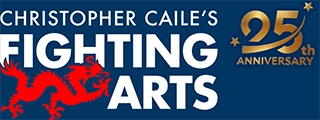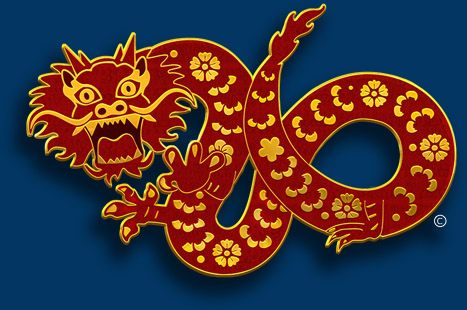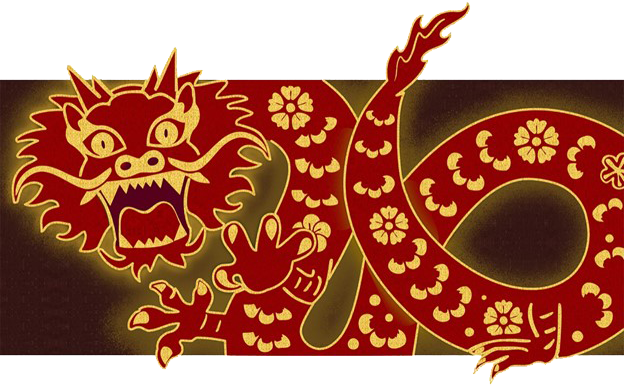Science And The Martial Arts:
Deadpan Eyes
By Christopher Caile
If you have ever faced an opponent who seemed to look past you, eyes fixed, unfocused and slightly narrowed, the experience can be unnerving. Now it turns out that this “look” has a tactical advantage too.
I have always taught my students that when facing an opponent you should never focus (fix your gaze, attention or thoughts) on any specific attack once it is launched. This leaves you more vulnerable to a secondary attack because you then have to shift attention and focus (or worse, your thoughts) to what comes next, and this takes time. Instead I have taught students to focus on the entire opponent, and if an attack comes to keep a general focus (dealing with the attack in peripheral vision and reacting spontaneously) so that you are alert to what might come next (Zen state of mind). This way you are able to pick up secondary attacks sooner, sometimes even before their initiation, since your focus (awareness) is general and always alert. (1)
Recent research has added a new twist. It has been found that when you keep your eyes still, not blinking or moving (as suggested above), the perception of time itself slows. Thus, when you keep your gaze steady and unfocused (on an opponent and any potential attack), not only are you able to pick up secondary movement more quickly, but also these movements will seem to come slower (less condensed in time).
A recent study by Concetta Morrone, John Ross and David Burr reported in Nature Neuroscience found that subjective time is compressed around the onset of the normal rapid, jerky eye movements people perform thousands of times daily. These movements are performed automatically to align subjects of interest (something focused upon) with the center of the eye which can perceive in higher definition (high acuity fovea such as are used in reading or other detailed perceptual activities).
In this study participants compared the time between two sets of two horizontal bars flashed before their eyes, the first set just before and the second set just after a saccade (jerky eye movement). Study participants reported that the time interval between the flashed sets of the two horizontal bars seemed to be equal, when in fact the second flash time was one half of the former. Thus the subjective time was doubled near the saccade onset (the actual gap was 100ms versus 50ms).
This has important potential implications for martial artists. If you allow your eyes to dart around in their natural fast jerky movements trying to focus on an attack (such as the arm or fist of an attacking limb) only to refocus again on a secondary attack, the second attack will seem to come faster. But, if instead you control your eyes to keep an unmoving, non-blinking unfocused overview of an opponent, your perception of time and any attack will slow.
This research finding reminded me of the famous essays of the Japanese Zen monk, Takuan Soho, to a master swordsman written three and one half centuries ago. Takuan’s discourses, while not discussing physical aspects of keeping the eyes fixed and unfocused, do discuss a parallel mental state. Relating Zen to the psychology of conflict, Takuan stresses the importance of keeping the mind stabilized (fixed without thought) during conflict. Takuan cautions the swordsman that if your mind becomes occupied with an opponent’s attack (such as a downward sword strike) and if the defender thinks of meeting that attack, his mind will stop. This will undo the defender and he will be cut down since the mind was stopped (was filled, something which stops the natural flow of spontaneous reaction). (2)
It is in Zen meditation (practice of the mental aspects) that both the fixed, unfocused gaze and the clear mind are practiced. In sitting, most often the student fixes his or her gaze in front, unfocused while keeping (at least trying to keep) the mind clear of thoughts, ideas or images through intent focus on total awareness and perception. This research study may explain yet another reason why Zen meditation can help in self-defense situations.
Footnotes:
(1) See these related articles: Fighting Zen – How Meditation Can Enhance Your Fighting Skills, by Christopher Caile and Controlling The Flinch, The Blink and The Turn Away, by Christopher Caile
(2) See the book, “The Unfettered Mind – Writings of the Zen Master to the Sword Master,” by Takuan Soho, translated by William Scott Wilson. Kodansha Publishing, 1989. paperback, pages 14 and 19.

About the Author Christopher Caile
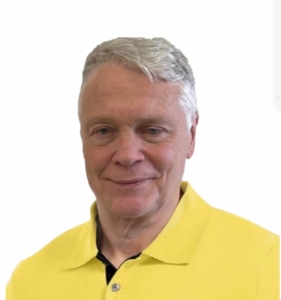
Screenshot
Christopher Caile is the Founder and Editor-In-Chief of FightingArts.com. He has been a student of the martial arts for over 65 years.
He first started in judo while in college. Then he added karate as a student of Phil Koeppel in 1959 studying Kempo and Wado-Ryu karate. He later added Shotokan Karate where he was promoted to brown belt and taught beginner classes. In 1960 while living in Finland, Caile introduced karate to that country and placed fourth in that nation’s first national judo tournament.
Wanting to further his karate studies, Caile then hitch hiked from Finland to Japan traveling through Scandinavia, Europe, North Africa, the Middle East and South and Southeast Asia — living on 25 cents a day and often sleeping outside.
Arriving in Japan (1962), Caile was introduced to Mas Oyama and his fledgling full contact Kyokushinkai Karate by Donn Draeger, the famous martial artist and historian. Donn also housed him with several other senior international judo practitioners. Donn became Caile’s martial arts mentor, coaching him in judo and introducing him to Shinto Muso-ryu under Takaji Shimizu.
Caile studied at Oyama’s honbu dojo and also at Kenji Kurosaki’s second Tokyo Kyokushinkai dojo. In his first day in class Oyama asked Caile to teach English to his chief instructor, Tadashi Nakamura. They have been friends ever since. Caile also participated in Oyama’s masterwork book, “This Is Karate.”
Caile left Japan with his black belt and designation as Branch Chief, the first in the US to have had extensive training in Japan directly under Oyama Sensei. As such, Oyama Sensei asked him to be his representative on visits to his US dojos to report on their status.
A little over a year later, Nakamura, Kusosaki and Akio Fujihira won an epic David vs. Goliath challenge match against Thailand’s professional Muay Thai Boxers in Bangkok, Thailand, thrusting Kyolushinkai and Nakamura into national prominence.
Back in the US Caile taught Kyokushinkai karate in Peoria, Il while in college and later in Washington, DC. while in graduate school. Durimg this time Shihan Nakamura had moved to New York City to head Kyokushinkai’s North American Operation.
In 1976 when Kaicho Tadashi Nakamura formed the World Seido Karate organization, Caile followed. Living then in Buffalo, NY, Caile taught Seido karate and self-defense at the State University of New York at Buffalo (SUNY Buffalo) for over 15 years where he also frequently lectured on martial arts and Zen in courses on Japanese culture.
Caile moved to New York City in 1999 to marry Jackie Veit. He is now an 8th degree black belt, Hanshi, training in Seido Karate’s Westchester, NY Johshin Honzan (Spiritual Center) dojo. In Seido Caile is known for his teaching of and seminars on kata applications. He also produced a 14 segment video series on Pinan kata Bunkai currently available to Seido members.
Caile is also a long-time student and Shihan in Aikido. He studied in Buffalo, under Mike Hawley Shihan, and then under Wadokai Aikido’s founder, the late Roy Suenaka (uchi deshi under Morihei Ueshiba, founder of Aikido and was Shihan under Tohei Sensei). In karate, Suenaka (8thdan) was also an in-house student of the Okinawan karate master Hohan Soken.
Having moved to New York City, Caile in 2000 founded this martial arts educational website, FightingArts.com. Twenty-five years later, in 2025, it underwent a major update and revision.
For FightingArts.com and other publications Caile wrote hundreds of articles on karate, martial arts, Japanese art, Chinese Medicine and edited a book on Zen. He also developed relationships with a cross section of leading martial arts teachers. Over the last four decades he has conducted extensive private research into karate and martial arts including private translations of the once secret Okinawan hand copied and passed on Kung Fu book, the Bubishi, as well as an early karate book by the karate master Kenwa Mabuni. He periodically returns to Japan and Okinawa to continue his studies and participate Seido karate events. In Tokyo he practiced (with Roy Suenaka Sensei) in a variety of aikido organizations with their founders – including private interviews and practices at the Aiki-kai Aikido Honbu dojo with the son and grandson of aikido’s founder, Doshu (headmaster) Kisshomaru (an old uchi-deshi friend) and his son, Moriteru Ueshiba and in Iwama with Morihiro Saito. On Okinawa he studied Goju Ryu karate under Eiichi Miyazato, 10th dan founder of Naha’s Jundokan, and also with Yoshitaka Taira (who later formed his own organization, who specialized in kata Bunkai. While there Caile also trained with Hohan Soken’s senior student, Master Fusei Kise, 10 dan as well as with the grandson of the legendary karate master Anko Itosu.
Caile’s other martial arts experience includes: Diato-ryu Aikijujitsu and Kenjitsu, kobudo, boxing, Muay Thai, MMA, Kali (empty hand, knife and bolo), study of old Okinawan Shoran-ryu & Tomari body mechanics, study of old Okinawan kata under Richard Kim, study of close quarter defense and combat, including knife and gun defenses, Kyusho Jitsu and several Chinese fighting arts including 8 Star Praying Mantis, Pak Mei (White Eyebrow), and a private family system of Kung Fu.
Caile is also a student of Zen as well as a long-term student of one branch of Traditional Chinese Medicine, Chi Kung (Qigong). As one of two senior disciples of Chi Kung master Dr. Shen (M.D., Ph.D.) Caile was certified to teach and practice. This led to Caile’s founding of the The Chi Kung Healing Institute on Grand Island, NY. In Western NY, he also frequently held Chi Kung seminars, including at SUNY Buffalo and at the famous Chautauqua Institution in Chautauqua, NY. His articles on Chi Kung also appeared in the Holistic Health Journal and in several books on alternative medicine.
Caile holds a BA in International Studies from Bradley University and MA in International Relations with a specialty in South and Southeast Asia from American University in Washington, D.C. While in Buffalo, NY he also studied digital and analog electronics.
In his professional life Caile also worked in public relations and as a newspaper reporter and photographer. Earlier he worked in the field of telecommunications including Managing a Buffalo, NY sales and service branch for ITT. He then founded his own private telephone company. This was followed by creation of an electrical engineering company that designed and patented his concept for a new type of low-cost small business telephone system (which was eventually sold to Bell South). The company also did contract work for Kodak and the US space program. Simultaneously Caile designed and manufactured a unique break-apart portable pontoon boat.
Most recently Caile co-founded an internet software company. Its products include software suites with AI capability for control and management of streaming media, such as video and music, an all-in-one book publishing software product for hardcover, eBook and audio book creation and security software for buildings and government use.
For more details about Christopher Caile’s martial arts, work experience and life profile, see the About section in the footer of this site.
Search for more articles by this author:
